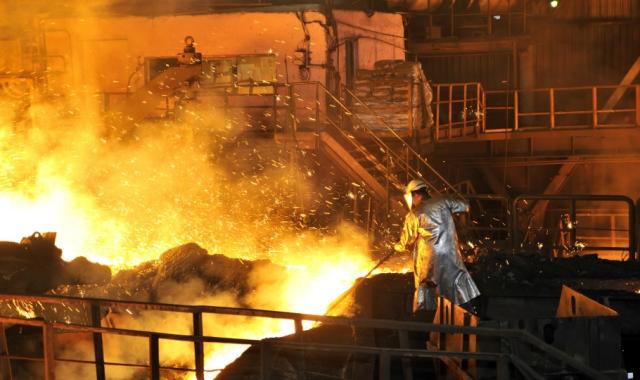
Forecasts of growth in global coal demand were based on China's industrial growth and the higher demand for steel, which relies on sub-bituminous, metallurgical coal.
LOVELAND, Colo.—In less than five years, coal’s anticipated ascent to global dominance was waylaid, not by U.S. government policy but by China’s economic slump.
Taking its place as the fuel of choice was natural gas, Charles Mason, professor of petroleum and natural gas economics at the University of Wyoming, told attendees at the recent Energy Exposition conference.
“In 2011, coal demand from a variety of places in the world showed that demand was being driven by China by 2012,” Mason said. “At that point in time the U.S. Energy Information Agency [EIA] and the International Energy Agency were making two predictions about demand from 2010 through 2030.”
The predictions, Mason said, were:
- The incremental demand for coal would dwarf everything else on the market; and
- One sub-market, China, would drive that demand.
The two organizations based their forecasts on the rapid industrial growth of emerging economies like China and India. That kind of growth relies on steel, which is produced with sub-bituminous, metallurgical coal, and the high demand naturally leads to a spike in coal prices. When the growth slows, as it did dramatically in China, so does demand.
“We’ve seen that China’s economy is not going to go back to the good old days and coal doesn’t look solid right now,” Mason said. “The soft demand internationally is what’s driving coal prices.”
Who's Winning Battle Of Shale Gas Vs. Clean Coal?
By 2015-2016, gas production and demand had taken over as the primary fuel in the U.S. energy portfolio.
“As an economist, I start to think about the manifestation of this increase in production and its effect on prices, and if you look at the prices between 2007 and 2016, there has been a pronounced, steady downward trend in the price of natural gas and that’s what’s really driving this shift away from coal because now it’s cheaper to use natural gas to make electricity,” Mason said.
And sufficient domestic supplies encouraged U.S. LNG exports, he said. “Nobody in the U.S. thought about doing that 10 years ago.”
And while the global industrial demand for metallurgical coal for steel and construction plateaued in 2011-2012, the new supplies of gas in world markets spurred more countries to build gas-fired electrical power plants, including China, Saudi Arabia and Japan.
Mason said he believes that there will be an expanding role for renewable energy sources,, including wind and solar. “Even though they cannot compete in terms of reliability, they are definitely competitive in terms of costs and it’s not going away.”
In both solar and wind, unit costs are steadily falling, Mason said, and he believes these two sources will stay in the game, even with their daily fluctuations—having sunshine or having wind to power the systems. He also noted that while fluctuations occur every day, they are also seasonal throughout the calendar year and gas or coal-fired power plants can be programmed to step in during these seasonal fluctuations to manage a steady output for consumers.
Mason said that “The concept an economist would use would be to look at ‘the responsiveness of prices’—if there’s a big increase in supply or demand, how much or fast do prices respond? Right now, both supply and demand for natural gas are insensitive and I doubt that they will fall persistently below a $2 per Mcf.”
Larry Prado can be reached at lprado@hartenergy.com.
Recommended Reading
Marketed: EnCore Permian Holdings 17 Asset Packages
2024-03-05 - EnCore Permian Holdings LP has retained EnergyNet for the sale of 17 asset packages available on EnergyNet's platform.
Marketed: Navigation Powder River Eight Leasehold Lots in Wyoming
2024-04-09 - Navigation Powder River has retained EnergyNet for the sale of eight non-producing federal leasehold lots in Converse and Campbell counties, Wyoming.
Exxon Signals Potential Counter Offer for Hess’ Guyana Assets
2024-03-07 - Exxon Mobil has filed a contract arbitration claim related to Chevron’s proposed purchase of Hess Corp.’s interests in the Stabroek Block offshore Guyana.
US Proposes Second GoM Wind Lease Auction
2024-03-20 - Combined, the four proposed areas for offshore wind have the potential to power about 1.2 million homes if developed, according to the Interior Department.
Benchmark Buys Revolution Resources’ Anadarko Assets in $145MM Deal
2024-02-20 - Benchmark Energy II is acquiring Revolution Resources just over four years after Revolution bought out Jones Energy Inc.’s Midcontinent portfolio.


